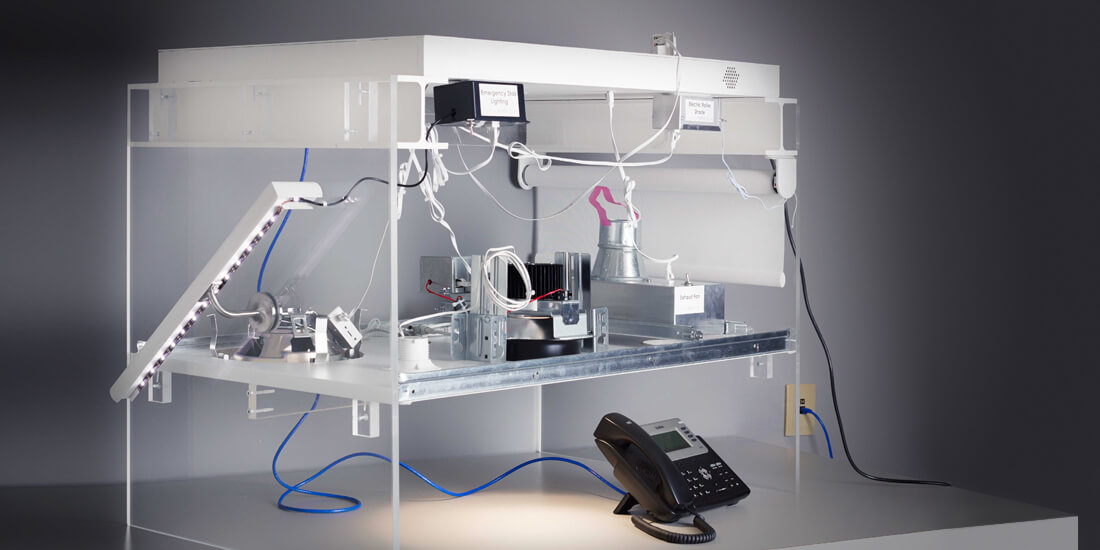A collaboration of Canadian companies led by Toronto’s WZMH Architects has developed an award-winning prefabricated panel that could make buildings smarter and more efficient.
The prefab Intelligent Structural Panels are made of two steel plates, just two inches apart, that sandwich connective tech and are arranged something like an enlarged microchip. Lighting, HVAC, elevators, security systems, fire safety systems, and all manner of sensors can be plugged into the panels, which, as the name suggests, would serve as a structural element—likely flooring—in the building process. The panels can be connected with one another, and the designers envision that the various parts all seamlessly communicate; sensors that determine occupancy and temperature could pass their data along to climate control or lighting systems, for example.
Carrying both data and electricity via power-over-ethernet connections, as well as using low-voltage DC power, the panels are far less electricity-intensive than most current building systems and would do away with the need for numerous transformers demanded by AC power.
Not only simplifying network and electric connectivity, WZMH estimates that the smart panels could bring the total amount of building materials down by approximately 10 percent. WZMH also believes that the panels could take advantage of the energy that would otherwise be wasted and feed it gradually into other systems, such as heating and cooling. The IoT-ready panels would be managed by building users through an app.
While still in the prototype stage, the Intelligent Structural Panels are already getting noticed. In 2018, WZMH won the UPPlift True Disruptor Award from the France Canada Chamber of Commerce, and in 2019 won the 2019 Award of Excellence from the Canadian Consulting Engineering Awards for the project. WZMH research and development head Hiram Boujaoude was also nominated as an Innovator of the Year at Autodesk’s AEC Excellence Awards.
